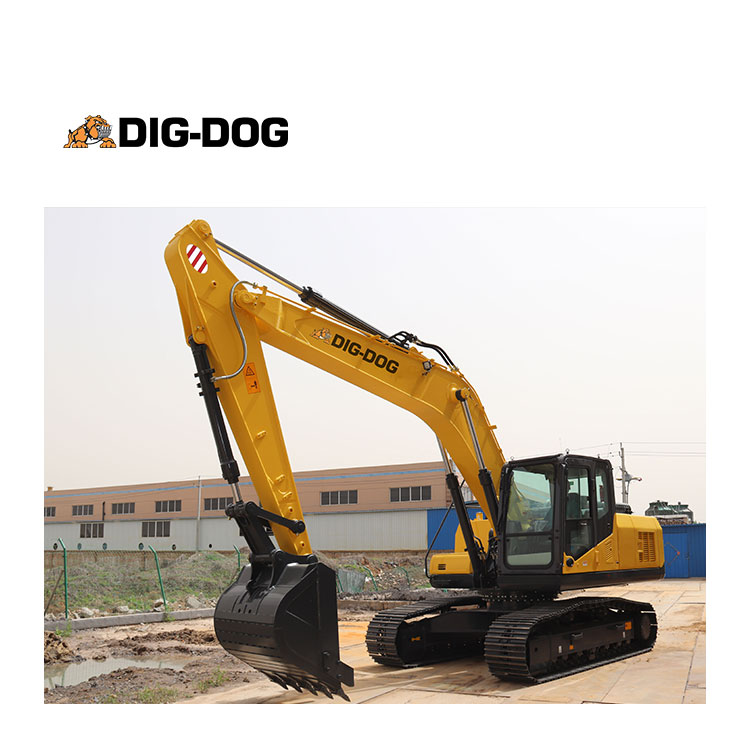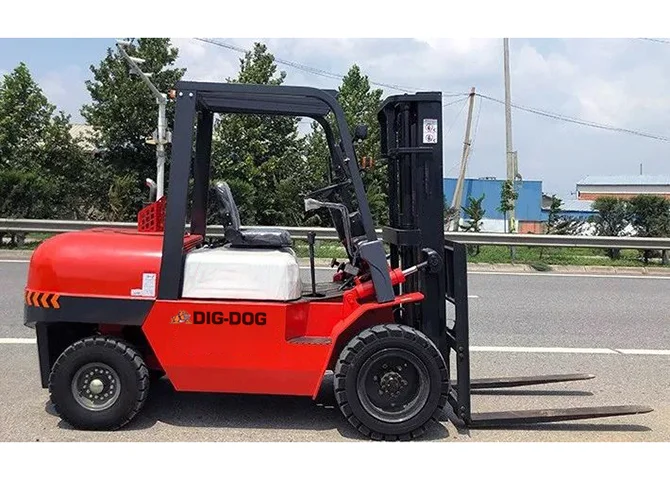Excavator , also known as excavating machinery (excavating machinery), also known as excavator, is an earth-moving machine that uses a bucket to excavate materials above or below the bearing surface and load them into a transport vehicle or unload them into a stockpile.

Excavator excavation materials are mainly soil, coal, sand, and soil and rock after pre-sonning. From the development of construction machinery in recent years, the development of excavators is relatively fast, and excavators have become one of the most important construction machinery in engineering construction. The three most important parameters of an excavator: operating weight (mass), engine power and bucket capacity of the bucket.
Structure composition
Common excavator structure includes, power unit, work unit, rotary mechanism, operating mechanism, transmission mechanism, travel mechanism and auxiliary facilities.
The transmission mechanism transmits the power of the engine to the hydraulic motor, hydraulic cylinder and other actuating elements through the hydraulic pump to push the work unit to complete various operations.
Traveling device
The running device is the chassis, including the crawler frame and running system, which mainly consists of crawler frame, running motor + reducer and its pipeline, driving wheel, guiding wheel, carrier wheel, supporting wheel, crawler, tensioning buffer device, whose function is to support the weight of the excavator and transform the power transmitted by the driving wheel into traction to realize the running of the whole machine.
The frame assembly (i.e. crawler frame assembly) is an integral welded part with X-shaped structure, the main advantage of which is its high load-bearing capacity. The frame assembly consists of three parts: left longitudinal beam (i.e. left track frame), main frame (i.e. middle frame) and right longitudinal beam (i.e. right track frame). The weight of the frame assembly is 2 tons.
The central rotary joint is a hydraulic component that connects the slewing platform and the chassis oil circuit, which ensures that after the slewing platform is rotated at any angle, the running motor can still be normally oiled.
Crawler excavators have two types of chassis: rubber and steel tracks. Rubber track chassis can carry 10 tons of body, low noise, small damage to the ground, steel track chassis load weight is greater, large tracked excavators are basically equipped with steel track chassis
Advantages: strong off-road capability, strong passing ability, strong load-bearing capacity, strong climbing ability, good stability and durability.
The 20-ton class excavator can be used for mining and agriculture, and is a god machine in the hearts of many machine enthusiasts. So 20-ton excavators are suitable for what working conditions?
(1) excavation of buildings and plant foundations.
(2) excavation of earth materials, stripping mining site cover.
(3) loading operations in quarries, tunnels, under ground plants and stockyards.
(4) excavation of channels, canals and dredging of waterways
(5) Pouring, lifting, installation, piling, ramming and other operations after replacing the working device.
Although these machines we may rarely come into contact with them in our daily lives, but in fact our lives are closely related to these machines, excavators are widely used in construction, water conservancy, electricity, roads, mines, ports and other engineering fields, and when our homes are built, they quietly exit to rush to another "battlefield". If the car is to change human life, then the excavator is to build human life. On the other hand, they use the sky to measure the height of the world, with infinite affection to call for the embrace of the blue sky, look up to the sky, bring us to the front of the mind is a shocking mechanical art of beauty.
 BONOVO Group at INTERMAT 2024 Paris Exhibiton
BONOVO Group at INTERMAT 2024 Paris Exhibiton
 A Ultimate Guide to Clamp Forklifts and Attachments
A Ultimate Guide to Clamp Forklifts and Attachments
 How To Choose The Right Compact Wheel Loader
How To Choose The Right Compact Wheel Loader
 How Much Does a Forklift Weigh?
How Much Does a Forklift Weigh?